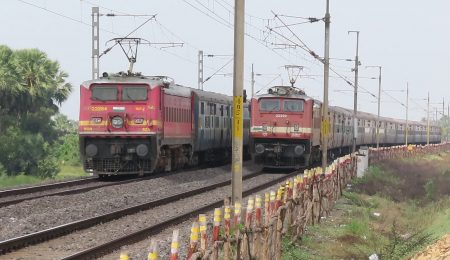India’s vast railway network, one of the largest in the world, includes numerous high-speed dangerous train track curves that pose significant risks to both trains and trespassers. These curves are particularly perilous due to their sharp bends, limited visibility, and the high speeds at which trains travel. This article explores some of these dangerous curves, emphasizing the inherent dangers and the precautions necessary to mitigate risks.
The Perils of High-Speed Curves
Blind Spots and Limited Visibility
Many of India’s high-speed train track curves are notorious for their blind spots. These blind spots make it difficult for both train operators and trespassers to see oncoming trains, increasing the likelihood of accidents. The dense foliage, hilly terrain, and infrastructure surrounding these tracks further obstruct visibility, creating hazardous conditions.
Speed and Momentum
Trains on these curves often travel at speeds of up to 110 km/h or more. The combination of high speed and sharp bends can lead to derailments if the train’s speed is not adequately managed. The momentum of a high-speed train can make it difficult to stop or slow down quickly, adding to the danger.
Trespassing Risks
Trespassers are particularly at risk on these high-speed curves. Many people use railway tracks as shortcuts, unaware of the imminent dangers. The blind spots on these curves mean that trespassers may not see or hear an approaching train until it is too late. Additionally, the speed at which trains travel can make it nearly impossible for them to stop in time to avoid a collision.
Notable Dangerous Curves in India
Dudhsagar Falls, Goa
The Dudhsagar Falls curve in Goa is one of the most picturesque yet dangerous train track curves in India. The curve is located near the Dudhsagar Waterfalls on the Goa-Karnataka border. While the view is breathtaking, the curve’s sharp bend and high-speed trains make it a risky spot for trespassers and tourists who flock to the area.
Horseshoe Curve, Darjeeling
The Horseshoe Curve in Darjeeling, West Bengal, is another hazardous curve. Part of the Darjeeling Himalayan Railway, this curve is characterized by its steep gradient and narrow tracks. The trains here often navigate tight bends at relatively high speeds, posing risks to both passengers and locals who might wander onto the tracks.
Kalka-Shimla Railway, Himachal Pradesh
The Kalka-Shimla Railway, a UNESCO World Heritage Site, has several dangerous curves along its route. These curves are not only sharp but also situated in mountainous terrain, increasing the risk of derailments and accidents. The high-speed toy trains that ply this route add to the danger.
Kasara Ghat, Maharashtra
Kasara Ghat, located on the Mumbai-Nashik route, is known for its sharp bends and high-speed trains. The curves here are particularly perilous during the monsoon season when tracks can become slippery. Trespassers often use these tracks, unaware of the imminent danger posed by fast-approaching trains.
Mitigation Measures
Enhanced Signage and Warnings
One of the primary measures to mitigate risks on these dangerous curves is the installation of enhanced signage and warning systems. These can alert both train operators and trespassers to the dangers ahead. Bright, reflective signs and audible warnings can significantly reduce the risk of accidents.
Speed Regulation
Regulating the speed of trains on these curves is crucial. Implementing strict speed limits and ensuring that train operators adhere to them can prevent derailments and reduce the likelihood of accidents. Automated speed control systems can also be deployed to manage train speeds more effectively.
Fencing and Barriers
Erecting fences and barriers along high-risk curves can prevent trespassers from accessing the tracks. These physical barriers act as deterrents, keeping people away from the danger zones. Additionally, regular maintenance and inspection of these barriers are essential to ensure their effectiveness.
Public Awareness Campaigns
Educating the public about the dangers of trespassing on railway tracks, especially around high-speed curves, is vital. Public awareness campaigns through various media channels can highlight the risks and encourage safer behavior. Schools and community centers can also be involved in spreading the message.
Technology Integration
Integrating advanced technology, such as GPS-based tracking systems and real-time monitoring, can enhance safety on dangerous curves. These technologies can provide train operators with precise information about upcoming curves and potential obstacles, allowing for better decision-making.
The high-speed dangerous train track curves in India pose significant risks to both train operations and trespassers. Blind spots, high speeds, and the presence of trespassers make these curves particularly hazardous. However, with appropriate mitigation measures such as enhanced signage, speed regulation, fencing, public awareness campaigns, and technology integration, the risks can be significantly reduced. Ensuring the safety of both passengers and the public is paramount, and continued efforts to address these dangers are essential for the Indian railway system.
Supplier or Manufacturer from India? Register FREE and List Your products





Leave feedback about this